
On the church grounds —wheels that were part of the sawmill project by the first missionary. Imported from the US in tne early 1900s.
THERE were only three people who arrived in Banaue who were interested to go to Sagada that morning: I who did not have any itinerary, and the German couple who looked like they want to kill each other.
“Not a good sign,” said the driver, “but if each one of you pay me P600, we can zoom to Sagada.”
The three of us agreed, and in less than three hours,
I was happily waving at the lady by the main door of the Residential Lodge.
“You are our only guest for now,” she told me.
I wasn’t surprised.
My visit fell on a Monday on a rainy season.
Sagada was deserted.

Hanging coffins of Echo Valley
Everything stopped and the occasional barks from the dogs or the roaring engines from public vehicles passing by the narrow National Highway were weak indications that this town of 12,000 people is alive.
I paid P300 for my room, freshened up, and started my trek to the tourism office to pay the environmental fee of P35 and check out which activity in their tour list fits my idea of a slow-paced Sagada discovery.
But The Salt N Pepper Diner was inviting me to come up to the second floor for an early lunch. So I ordered sinarabasab, vinegar-marinated pork seasoned with salt and pepper and showered with green onions, ginger, and bulb onions. It tasted like pork sinuglaw where the meat is charcoal grilled before cut into pieces and then mixed with vinegar and spices.
Lawrence was my server that morning and his impeccable customer service was a come-on. He served my mountain tea just in time when I was finishing my salad. The entire meal was worth 375 pesos.
Sagada restos are quite pricey, said the patriarch of the Bisaya-speaking family from the other table.
I was eavesdropping on their conversation.
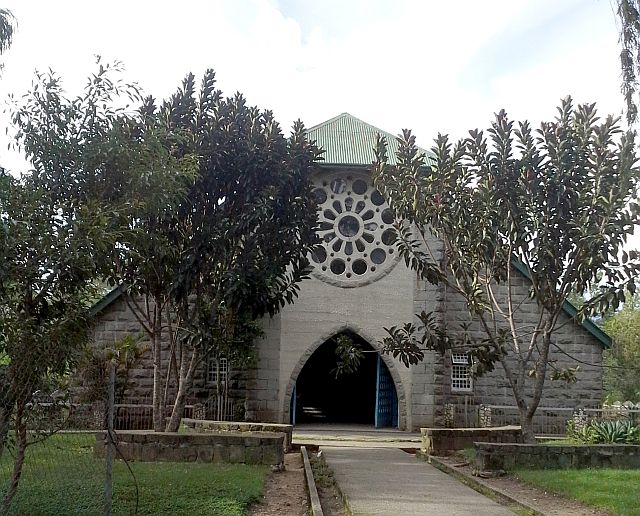
The Church of St. Mary the Virgin
If you want affordable dessert later, one of their companions suggested, let us go to the Lemon Pie House where breakfast, lunch, and dinner meals cost between P100 to P150 and a slice of lemon pie is only 30 pesos.
The restaurant was silent after they left so I walked all the way up where the Tourism Office was located and met Ruth, the receptionist.
I decided to book the short tour of the Echo Valley and the Hanging Coffins with tour guide Marco Galas as my official partner that afternoon.
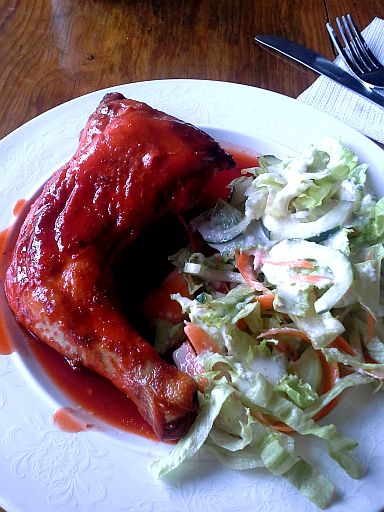
Sweet and Spicy Java Chicken with salad at The Yoghurt House
As it turned out Marco was the perfect guide having entered the profession since 1995 with breaks in between to study education and work as municipal tourism action officer for seven years.
“It saddens me when tourists do not care about the story of Sagada and just spend a lot of time taking pictures,” he said when I asked him what is the most challenging part of the profession.
He loves trekking as he can talk a lot about his tribe, the Igorot, and their traditions and culture.
Marco’s eyes were bright, like a teacher eager to share to his students what he knows, when he told me about his experience in being part of the burial of Lawagan, one of the men whose body is in one of the hanging coffins of Echo Valley.
“His coffin was positioned in this area in the morning. By one o’clock in the afternoon, we carried the body here,” he said.
Marco said it is tradition to have a Lakay (member of the council of elders) perform the ritual to send the dead to the after life. The old people themselves built their coffins when they are alive and they would say “Why would I spend a lot of time building a long, wide coffin when my body can fit in a small one?” He said there is no truth to written articles saying that coffins were hanged on elevated positions because their ancestors believe it is easier for their spirits to reach the heavens that way.
Marco said the location of the coffins is about preservation so they will not get wet when water rises. The location also prevents animals from eating the bodies.
I told Marco I cannot participate in the three-hour Echo Valley tour because I was advised by my doctors to take things slow because of my back-to-back Caesarean operation (from giving birth to twins and then, a singleton).
Marco was considerate and helpful.
There were a lot of stops along the way as he told me stories about how the Echo Valley was his playground as a boy. They call it Baw-eng, but the first person who made the first tourist map of Sagada, an Australian who lived in Sagada, called it such so the name stuck to this day.
The Church of Saint Mary the Virgin where the tour starts is an Anglican Church and where Marco attends church services. Ninety percent of the population are Anglicans as the first missionary arrived in Sagada in 1904.
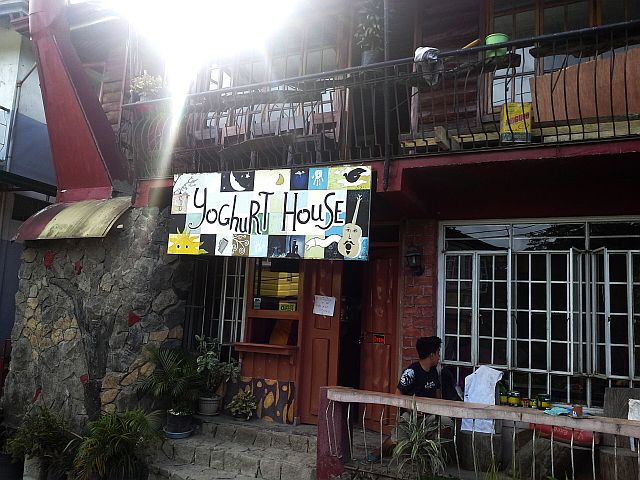
The famous Yoghurt House in Sagada
“Spreading religion was only their third priority. They were concerned about health first and living conditions second. Their approach was humanitarian so a lot of people followed,” he shared.
As we walked back to the tourism office, Marco shared his experiences —some of them tragic and gory—involving tourists who unfortunately met accidents and untimely deaths in Sagada.
Retrieving bodies in a cave, for example, is a communal activity. The whole town looks for the body and a cleansing ritual is done whenever this happens.
Back at the office, I was informed that the Kiltepan sunrise trip is confirmed so I should be ready at 4:30 in the morning.
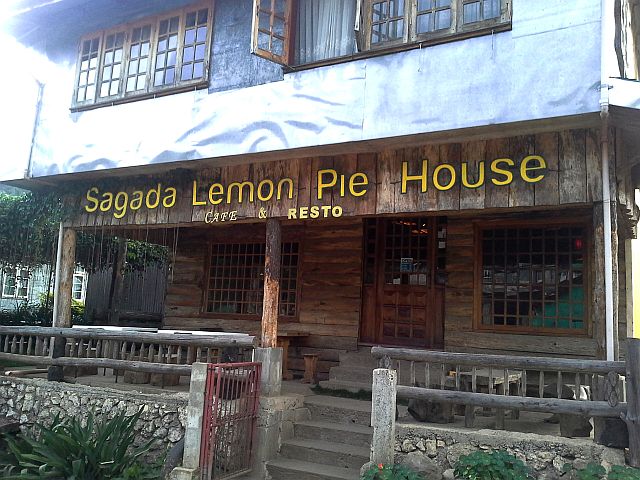
The Lemon Pie House
Marco told me not to get disappointed if I cannot take decent pictures of the cloud formation. “It (Kiltepan) used to be an artist’s refuge. But people flocked there because of that movie. Before that, Kiltepan was not even part of our bestselling tours.”
Before leaving, I asked another local to take a photo of us three: Marco, Ruth, and me.
I went back to Salt N Pepper Diner for dinner after having late lunch at The Yoghurt House and dessert and coffee at the Sagada Lemon Pie House and Sagada Brew.
Lawrence was there with fellow staff discussing about informative speech. I was the lone customer so I did what I do best: eavesdrop. Eventually, I learned about one of the waiter’s assignment on the harmful effects of cigarette smoking. His name is June Fiyao. We edited June’s speech, practiced a little bit, and unanimously agreed that June will ace tomorrow’s exercise.
I was back at the Lodge at 8:30 p.m. Curfew is strictly practiced at 10 p.m.
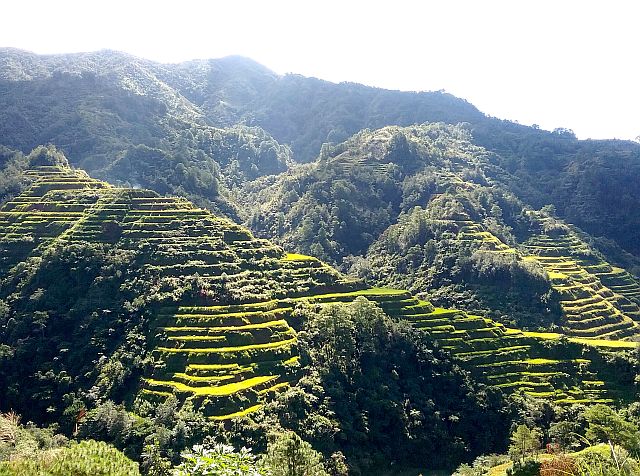
Sagada is an unpretentious destination.
Sagada is an unpretentious destination. I love that its restaurants stand beside residential houses—or are homes by their very nature—because it does not have a feel that it is sanitized just to please tourists.
Its charm does not lie on its tourist spots. Rather, its charm and mystic lies on its people.
They are not as warm as the Cebuanos but they are kind and respectful. They can be quite aloof and shy but they can be fun and upbeat when you initiate a conversation. They are honest.
If I ever decide to come back, it will not be for the cave or the falls or the sunrise.
I will come back for the people.

